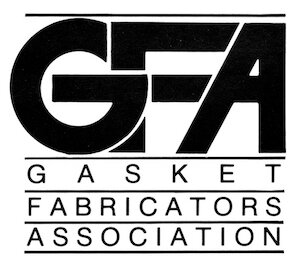USP Class VI Silicone
USP Class VI silicone materials from ElastaPro meet standards from biocompatibility from the U.S. Pharmaceopeia. Choose these specification grade silicone materials as solid silicone sheet or uncured silicone compound in the durometers, sizes, and colors that you need.
View HC Certification Detail
View HC Data Sheet
USP Class VI Solid Silicone Sheet
USP Class VI solid silicone sheet arrives ready for die cutting and is between .010” to .500” thick and available in widths of up 60”.
USP Class VI Uncured Silicone Compound
USP Class VI uncured silicone compound arrives ready for curing.
What is USP Class VI Silicone?
ElastaPro’s medical grade silicone complies with the rigorous requirements of the United States Pharmacopeia (USP) Class VI and ISO 109930 designations.
The United States Pharmacopeia (USP) Class VI designation is a strict biocompatibility standard for materials used in medical and pharmaceutical applications. It guarantees that materials meet high safety levels by undergoing a series of biological tests to confirm their non-toxicity and suitability for prolonged human contact. To meet this certification, the material undergoes multiple safety tests, including:
- Systemic Toxicity Test: Evaluates the potential for adverse effects when the material comes into contact with biological systems.
- Intracutaneous Test: Assesses potential irritation when exposed to human tissue.
- Implantation Test: Determines biocompatibility for long-term medical applications.
This certification makes sure that the material meets safety and performance standards necessary for medical devices and healthcare applications requiring prolonged human contact.
What are USP Classes?
The U.S. Pharmacopeia (USP) is a non-profit organization that defines requirements for medicines, pharmaceuticals, and healthcare products such as medical materials. USP standards aren’t regulations, but they inform decision-making at agencies like the U.S. Food and Drug Administration (FDA). For example, the Federal Food, Drug and Cosmetic Act (FDCA) recognizes USP quality standards for medicines.
As a government agency, FDA publishes its rules in the Code of Federal Regulations (CFR). For example, FDA CFR 21 177.2600 lists the elastomers, accelerators, retarders, activators, antioxidants, plasticizers, fillers, emulsifiers, and other additives that can be used in food and medical applications. This list includes silicone rubber, a synthetic elastomer, that can be platinum-cured to meet low limits for extractables.
Restriction of Hazardous Substances (RoHS), a European Union (EU) Directive, also restricts the use of certain substances. RoHS is associated with recyclable products and the electrical and electronics industries, but medical manufacturers also need to know whether silicone components such as keypads, buttons, and gaskets are made of compliant materials.
For its part, USP publishes test instructions and standards for the plastics, polymers, and elastomers that are used in medical devices and surgical equipment. Because these materials may come into contact with human tissue, these USP tests measure biocompatibility. The tests also correspond to numbered classes so that the healthcare industry can identify materials in a standard way.
Among USP classes, Class VI materials meet the most stringent testing requirements. USP Plastic Class VI, as this group is also known, includes silicones that pass a systemic toxicity test, an intracutaneous test, and an implantation test. These tests are directly related to the intended end-use of the silicone article and account for conditions such as patient contact time and temperature.
Is USP VI the Same as USP Class VI and USP Class 6?
Yes, USP VI is the same as USP Class VI and USP Class 6.
What are USP Class VI Requirements?
USP Class VI requirements involve a series of biological reactivity tests to demonstrate biocompatibility. Specifically, these requirements include passing acute systemic toxicity, intracutaneous, and implantation tests using live animals to evaluate the material’s biological effects. Materials must also meet specific requirements for temperature exposure during testing.
Biological Reactivity Tests
- Acute Systemic Toxicity: Extracts of the material are injected into test animals (usually mice) to evaluate any acute systemic toxic or irritant reactions over a 72-hour period.
- Intracutaneous: Extracts are injected under the skin of test animals (usually rabbits) to assess local irritation and toxicity.
- Implantation: Samples of the material are surgically implanted into the muscle tissue of test animals (usually rabbits) and observed for a set period, typically five to seven days, to check for negative tissue responses like irritation or infection.
Other Requirements
- Extraction fluids: The materials are extracted using a variety of fluids, including saline, vegetable oil, alcohol saline, and polyethylene glycol, to simulate different potential exposure scenarios.
- Temperature exposure: Extracts are exposed to different temperatures for specific durations before the toxicity tests are performed.
- Material composition: Materials must not only pass the physical and biological tests but also be free of certain animal-derived ingredients for certain medical applications.
- Consistency: The material must be consistent in its purity, strength, quality, and composition to ensure reliable performance
What are USP Class VI Sealing Products?
USP Class VI sealing products for sealing are high-purity biocompatible materials that undergo rigorous testing to meet the biological reactivity standards set by the U.S. Pharmacopeia (USP). These elastomers are used in seals, gaskets, and O-rings for medical devices and biopharmaceutical equipment where contact with human tissues and fluids is possible, ensuring safety and preventing contamination in high-purity applications. Silicones are typically used, but USP Class VI sealing products are also made from EPDM or PTFE (Teflon).
There are seven major types of USP Class VI sealing products.
- O-rings
- Gaskets
- Diaphragms
- Sealing Profiles and Extrusions
- Sanitary Seals and Tri-Clamp Gaskets
- Custom Molded Sheets
- Valve Seats and Sealing Components

